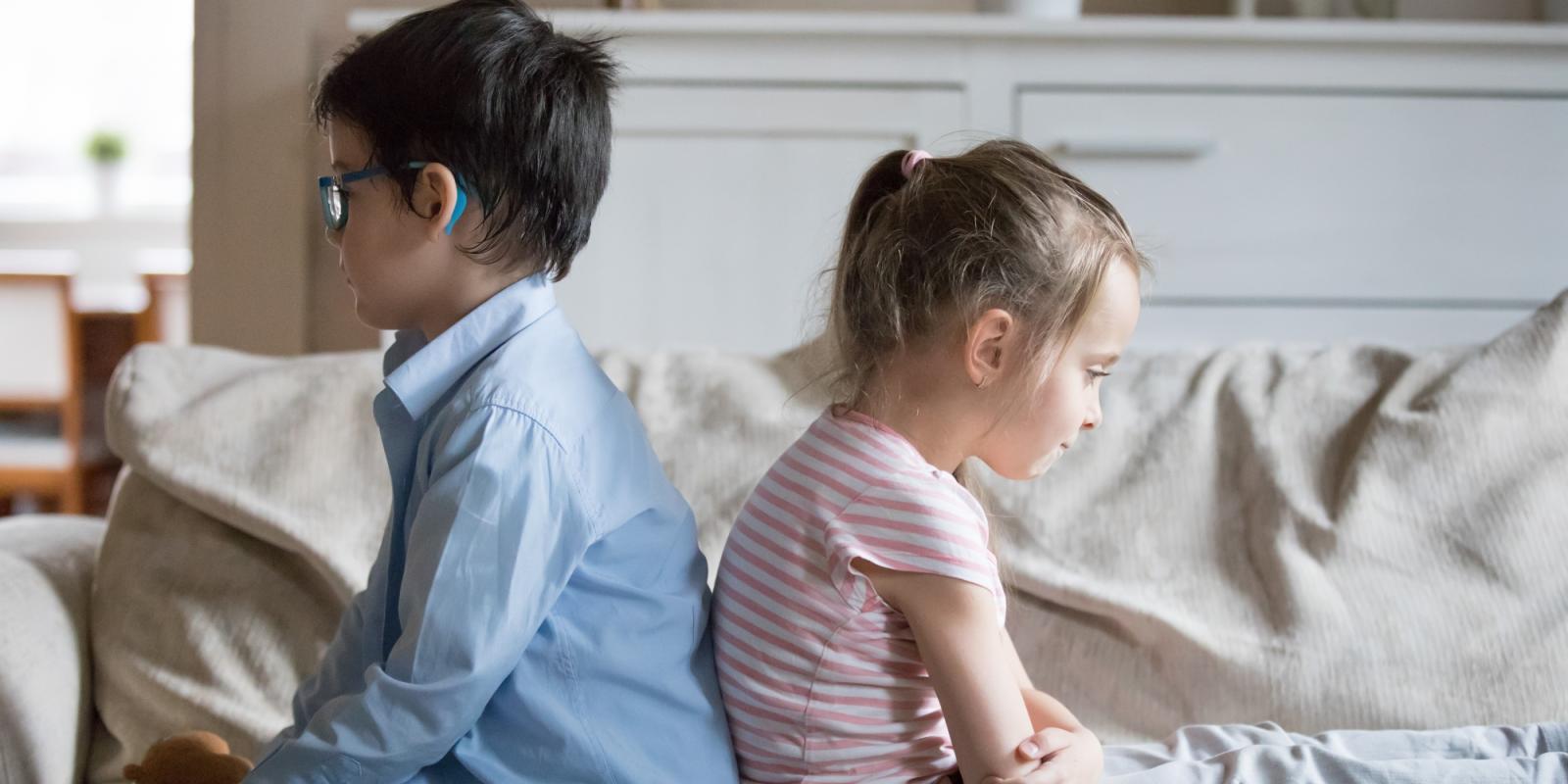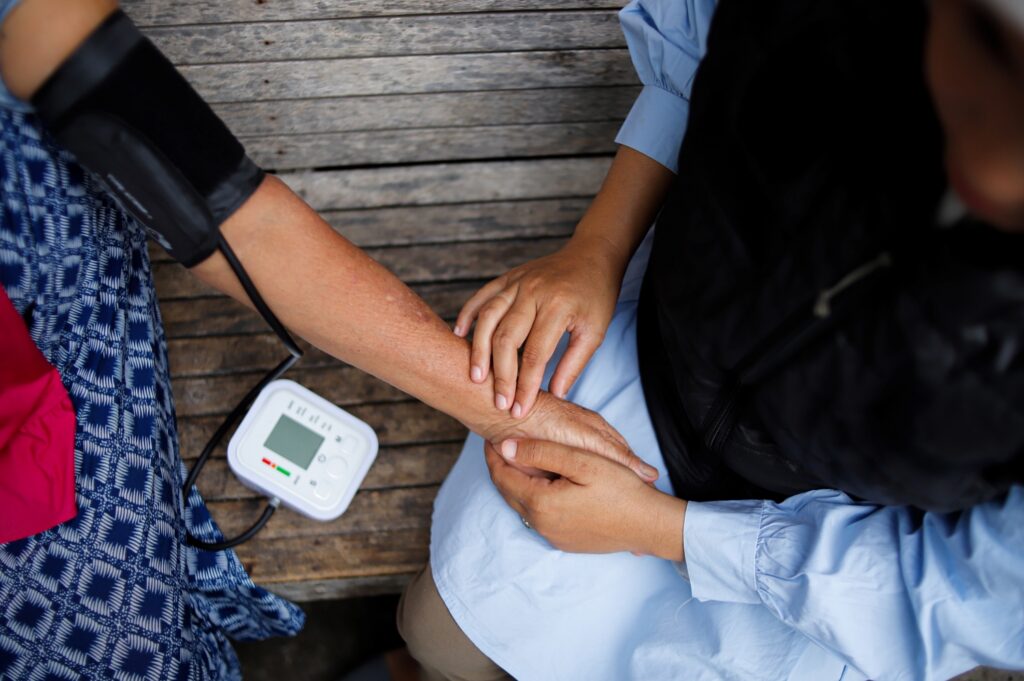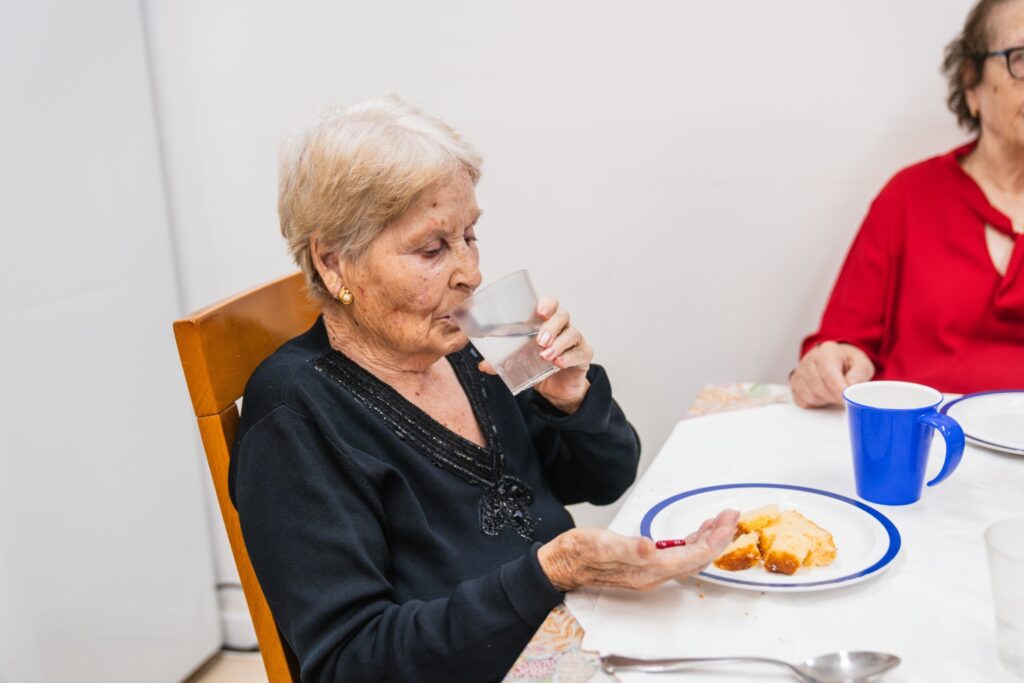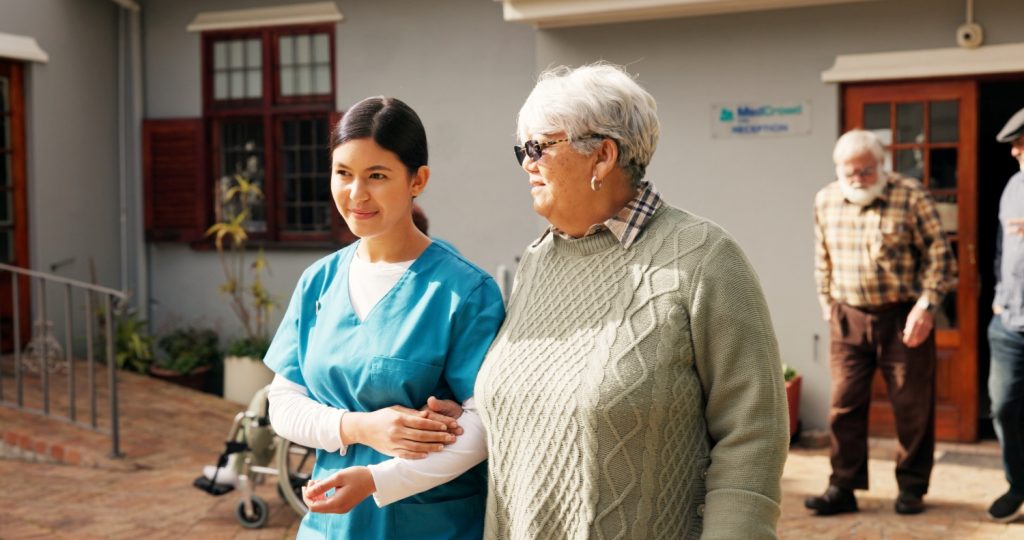Abstract
This article draws attention to the influence of family composition among grandparent-headed families, and its likely impact on family functioning. In this instance, family composition refers to the number of members in a family unit and whether the grandchildren are siblings, cousins, or fictive kin relations. Researchers and practitioners can employ an alternative lens through which to view grandparent-headed families and assess their influence on family dynamics by raising questions and awareness about family composition.
Key Words
family composition, custodial grandparents, family dynamics
The study of grandparents raising grandchildren has a dynamic history covering various facets of family functioning, grandparent well-being, and grandchild outcomes. Research findings suggest grandparents are challenged by intense emotional and physical stress and strains while raising their grandchildren. In addition, we know concepts such as resiliency, empowerment, and resourcefulness have positively influenced grandparents’ overall well-being (Hayslip et al., 2012; Musil et al., 2019; Whitley et al., 2012).
However, one characteristic of grandparent-headed families that has yet to receive much attention in the grandparent literature is family composition, which refers to the number of members in a family unit and whether the grandchildren are siblings, cousins, or fictive kin relations. This article discusses how family composition might influence family functioning and dynamics in households where grandparents are raising grandchildren.
What About Family Composition?
Studies about custodial grandparents usually present standard descriptors of the grandparent that include age, gender, and caregiving duration, along with the number, ages, and genders of their biological grandchildren. Grandparents’ education and income may also be included. However, usually there are no questions about the parentage of the grandchildren. Even though most grandchildren in the family are biologically related to the grandparent, there seems to be an unspoken assumption that the grandchildren are from the same birth parents. Therefore, they comprise a single-sibling group. Using this perspective is not necessarily incorrect, but it may not accurately represent the family and its particular needs. Might other features of grandparent-headed families need consideration to better understand this family group?
Previous studies on grandparent-headed households rarely give any indication of whether the custodial grandchildren are from a single birth parent or different birth parents within the family system. Perhaps grandparents raising their grandchildren from one birth parent is a common structure for most intergenerational families. But it is unclear why one would assume so, especially because extended families are so prevalent in many cultural groups, such as in African American and Latino families.
When sibling groups experience different types of negative parenting, grandparents may have to navigate their grandchildren’s physical, mental, developmental, and social adverse effects.
In such families, it is not uncommon for a cousin to come to live with a family, and for the siblings to openly identify that cousin as their “brother” or “sister.” Such “reclassification” of family members is a way to give the cousin a sense of being fully and intimately connected with the immediate family unit, especially following a crisis involving the birth parents (Allen et al., 2011). It is a way for the family to tell the cousin, “You may not belong with your mom right now, but you do belong to us.”
Failing to explore such cultural nuances when defining family composition might lead to misinterpretations about the sources of grandchildren’s emotional and physical stress or the levels of trauma as perpetrated by different birth parents within a family unit. The custodial grandparent needs to establish a family structure that promotes positive functioning and includes all grandchildren, who may have different parenting experiences. When separate sibling groups experience different types of negative parenting, grandparents may be required to navigate their grandchildren’s varied physical, mental, developmental, and social adverse effects.
To gain more insight into this idea, the Figure below illustrates a grandparent-headed family that includes blood-related grandchildren with fictive kin relations, all under the care of a single grandparent.
Family Diagram Example

In the Figure, the grandmother (GM), who is widowed and has three children, is her grandchildren’s primary or secondary caregiver. Her first daughter (D1) is married and has two young children (GC1 and GC2); the grandmother provides childcare for these grandchildren while their parents work.
The second daughter (D2) is in the military and has two school-age children (GC3 and GC4); the grandmother has temporary guardianship of these grandchildren while her daughter is deployed overseas.
The grandmother’s third child, a son, had two children, but is recently deceased. Before her son’s death, his children had spent extended periods with their grandmother. Their birth mother was not married to the children’s father and her whereabouts are unknown.
Lastly, the grandmother has a goddaughter for whom she has provided frequent care due to substance misuse by the goddaughter’s parent. On a recent visit, the mother failed to return after leaving her daughter in the care of GM. The grandmother is seeking to become her foster parent.
While this family structure seems complex and overwhelming, it reflects a reality faced by a segment of grandparent-headed families. For example, extended family structures are often formed based on tradition, culture, and necessity. Many caregivers cannot afford formal daycare services and depend upon family members to assist with childcare support. When parents have job opportunities or military duty, their children often live with grandparents until the parents return. It is often common for non-related families to form bonds connecting their children in fictive kin relationships that are just as strong and enduring as relationships by blood.
Family Experiences
Five of the seven children in the figure above have experienced crises involving their birth parents, likely leading to intense emotional strain or trauma. Parental death, abandonment, separation, and possible abuse/neglect are the leading adversities experienced by the children in the example. Emotional reactions can include stress, anxiety, and depression, possibly resulting in externalizing behavioral challenges at home and school.
For example, the grandchildren whose mother is on military duty (GC3 and GC4) could experience anxiety and stress depending on her location, length of deployment, and type of military duty. Previous studies have suggested that children as young as 3 whose parents are deployed can exhibit increased externalizing behavioral symptoms, such as tearfulness and disciplinary problems; in older children, signs of aggressive behavior or impulsivity may be apparent (Chartrand et al., 2008). One might consider how this context influences the family’s overall functioning based on the grandmother’s parenting style, established family norms, and defined roles and responsibilities within the family unit.
Two other grandchildren (GC5 and GC6) are likely to experience emotional effects stemming from their experience of maternal abandonment and the father’s recent death. In response to parental abandonment, it is not uncommon for children to have feelings of guilt, shame, and an intense sense of loss (Marici et al., 2023). These emotions could also characterize the goddaughter, who was abandoned by her mother. Following the death of a parent, children can potentially experience prolonged grief and depression with psychological and social functioning impairment, making it difficult for them to focus on school and complete tasks, and they may become socially isolated (Melhem et al., 2011). Because GC5 and GC6 and the goddaughter had similar experiences, one may wonder how they interact and relate. How do their interactions influence the relationship between them and their grandmother or other members of the family?
One also may wonder what influence the older children’s behaviors have on the youngest grandchildren (GC1 and GC2), even though they are with the grandmother for limited hours per day. A further question to consider centers on D2’s eventual return from military service: Could there be emotional repercussions or a level of secondary trauma felt by the remaining children who may experience a deep sense of loss when D2’s children leave the home to live with their mother?
Further, as is always the possibility with birth parents who have abandoned their children, there is the risk that those parents may unexpectedly return, which can create tension, stress, and even chaos between the grandparent, birth parent, and grandchildren. Experiencing this form of family stress can impact all the children in the home. Again, these points highlight the complexities intergenerational families can experience and the unexpected emotional upheavals that can occur and re-occur.
Family Supports
Because family composition can be complex, it may be challenging to discern which service supports and resources families require. In some cases, a grandchild needs mental health support for a longer duration than medical insurance programs will approve. In other cases, grandparents are hard-pressed to find a mental health or behavioral health specialist for children that is accessible in their locality, such as in rural communities.
More service options are needed to help these families, but until then, the grandparents and the grandchildren are disadvantaged. These challenges are not specific just to families with complex compositions; they reflect the needs of many relative caregivers of children. Although, the more complicated the family composition (as depicted in the Figure), the more amplified such common issues become.
‘More service options are needed to assist these families, but until then, the grandparents and the grandchildren are disadvantaged.’
Understanding the impact of family composition on functioning becomes apparent only when supported by compelling evidence, which will guide the development of relevant family support programs. There exists a variety of family services directed toward grandparents and other family relatives and kin who have taken on the parenting role of children. (For more information, see Generations United, 2023).
These programs have provided a lifeline to grandparent-headed families. With the support of public and/or private funding, many grandparents have access to therapeutic mental health support services through community health centers, as well as access to local support groups and respite care services to help counter some of the chronic stress that comes with parenting children with unique mental health and behavioral health needs. Legal support is not always widely available to address complex legal issues involving such exceptional circumstances. It is likely that more communities need family support services. The intensity and diversity of grandparent and grandchild needs, as illustrated by the examples above, suggests family composition could be a factor that intensifies families’ vulnerability for adverse outcomes without appropriate and accessible direct support services.
Conclusion and Next Steps
This article intends to broaden perspectives about grandparent-headed families and consider the influence of family composition on family functioning. When grandparents assume full-time parenting responsibilities for their grandchildren, many do so because they are adamant about having the children remain connected to their family group. Family connection preserves family ties, values, and traditions, all of which are potentially lost or suspended if children are placed in non-relative care. But in keeping family members connected, the chances of having families with an expanded composition may occur.
Past studies also have shown grandchildren raised by grandparents have a propensity for mental and behavioral health problems, which can negatively impact their academic progress, cognitive development, and social/emotional well-being (see Xu & Harrison, 2023; Xu et al., 2022).
Short of accessing mental health and educational intervention services, the risk of school failure and dropout is high for many of these young people. The long-term impact of such outcomes is worrisome for families. Perhaps exploring the influence of family composition may not only guide our understanding of the vulnerabilities or risks of this family group, but also help us to discover its strengths.
At present, it is essential to recognize that there are families, as depicted in the Figure, that reflect the given family structure with all its potential risks for adverse consequences experienced by various family members. Hopefully, one can also appreciate how the family’s composition might influence family dynamics (e.g., behavior patterns, communication styles, adherence to established family norms) that might create instability within the family unit for a time, but also potentially promote family stability. The following thoughts use family composition within grandparent-headed families as a lens through which to frame exploratory research ideas.
- Does family composition influence custodial grandparents’ parenting styles and grandchildren’s outcomes?
- To what extent do the grandchildren’s varied biological relationships and accompanying trauma-based experiences influence their emotional well-being?
- Is it possible that the dynamics in an extended family group differ based upon how grandparents relate to grandchildren of a single sibling group with relatively similar trauma exposures vs. different sibling groups with diverse trauma exposures?
- Are there differences in how grandparents relate to non-blood-related family members, such as godchildren, compared with their biologically related grandchildren?
- In essence, does it make any difference in grandparent or grandchild outcomes when the family composition includes variations of blood/non-blood relationships?
- Does family composition influence the balance of power in the family group?
- How do grandchildren from different sibling groups, including fictive kin, positively/negatively influence the behaviors of other sibling sets in the family?
There is very little information on the impact of family composition on family or child outcomes, particularly in grandparent-headed families; defining which support services and resources might best help these families remains difficult. Existing services and programs may be a start, but more study is required to determine the merits of the posed questions, along with any specific practice strategies.
Deborah Marie Whitley, PhD, is a professor and director of online programming at the School of Social Work, Andrew Young School of Policy Studies, at Georgia State University in Atlanta.
Photo credit: Shutterstock/fizkes
References
Allen, K. R., Blieszner, R., & Roberto, K. A. (2011). Perspectives on extended family and fictive kin in the later years: Strategies and meanings of kin reinterpretation. Journal of Family Issues, 32(9), 1156-1177. https://doi.org/10.1177/0192513X11404335
Chartrand, M. M., Frank, D. A., White, L. F., &Shope, T. R. (2008). Effect of parents’ wartime deployment on the behavior of young children in military families. Archives of Pediatric & Adolescent Medicine, 162(11), 1009-1014. https://doi.org/10.1001/archpedi.162.11.1009
Generations United. (2023). 2023 state of grandfamilies report: Building resilience: Supporting grandfamilies’ mental health and wellness. https://www.gu.org/app/uploads/2023/11/GU_2023-Grandfamilies-FullReport-FINAL.pdf
Hayslip, B., Davis, S. R., Neumann, C. S., Goodman, C., Smith, G. C., Maiden, R. J., & Carr, G. F. (2012). The role of resilience in mediating stressor-outcome relationships among grandparents raising their grandchildren. In B. Hayslip & G. C. Smith (Eds.), Resilient grandparent caregivers (pp. 48-69). Routledge.
Marici, M., Clipa, O., Runcan, R., & Pîrghie, L. (2023). Is rejection, parental abandonment or neglect a trigger for higher perceived shame and guilt in adolescents? Healthcare, 11(12), 1724. https://doi.org/10.3390/healthcare11121724
Melhem, N. M., Porta, G., Shamseddeen, W., Walker Payne, M., & Brent, D. A. (2011). Grief in children and adolescents bereaved by sudden parental death. Archives of General Psychiatry, 68(9), 911-919. https://doi.org/10.1001/archgenpsychiatry.2011.101
Musil, C. M., Zauszniewski, J. A., Givens, S. E., Henrich, C., Wallace, M., Jeanblanc, A., & Burant, C. J. (2019). Resilience, resourcefulness, and grandparenting. In B. Hayslip & C. A. Fruhauf (Eds.), Grandparenting: Influences on the dynamics of family relationships (pp. 233-250). Springer. https://psycnet.apa.org/doi/10.1891/9780826149855
Whitley, D. M., Kelley, S. J., & Campos, P. E. (2012). Promoting family empowerment among African American grandmothers raising grandchildren. In B B. Hayslip & G. C. Smith (Eds.), Resilient grandparent caregivers (pp. 235-250). Routledge.
Xu, Y., & Harrison, T. M. (2023). Socioemotional and behavioral problems of grandchildren raised by grandparents: The role of grandparent-grandchild relational closeness and conflict. Children, 10(10), 1623-1637. https://doi.org/10.3390/children10101623
Xu, Y., Wang, Y., McCarthy, L. P., Harrison, T., & Doherty, H. (2022). Mental/behavioral health and educational outcomes of grandchildren raised by custodial grandparents: A mixed methods systematic review. Health & Social Care in the Community, 30(6), 2096-2127. https://doi.org/10.1111/hsc.13876













